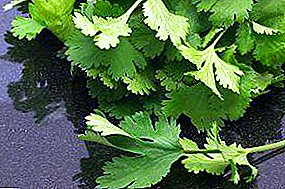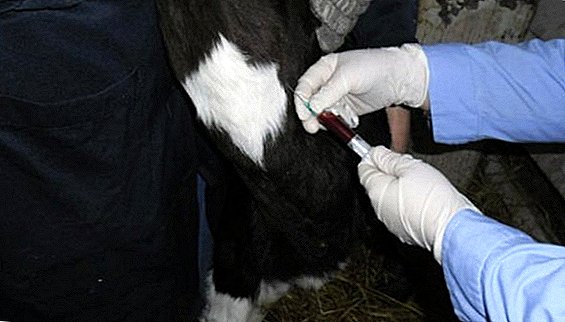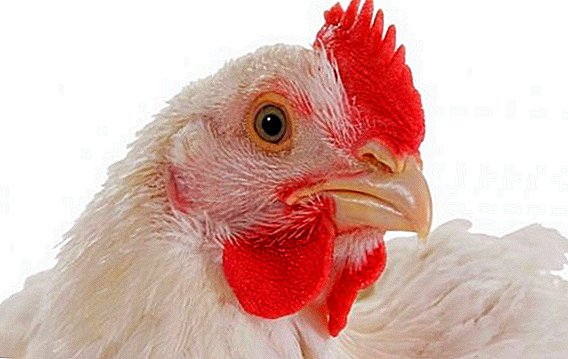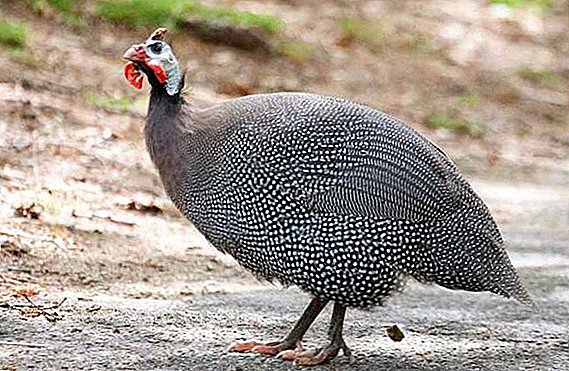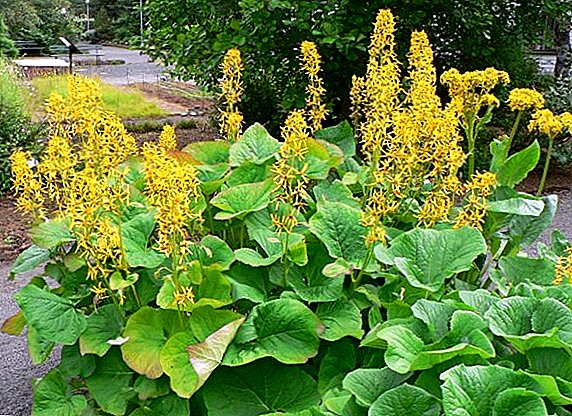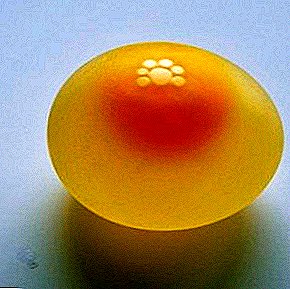 Grapes, in general, are considered to be quite hardy and easy to breed in a plant. However, there are insects and diseases that are very dangerous for him. Therefore, it is necessary to prepare in advance for possible troubles, familiar with the most well-known pests.
Grapes, in general, are considered to be quite hardy and easy to breed in a plant. However, there are insects and diseases that are very dangerous for him. Therefore, it is necessary to prepare in advance for possible troubles, familiar with the most well-known pests.
Did you know? Statistical studies conducted by scientists show that the grape harvest from pests is reduced annually by at least one third, and in case of failure to take appropriate measures to prevent diseases, losses can reach half of the crop. This, of course, is about professional vineyards, while at the summer cottage improper care of the grapes can completely destroy not only the harvest, but also the plant itself.The resistance of grapes to pests and diseases directly depends on the variety of the crop, however, the main enemies of all grape species are common, the difference consists only in the degree of symptoms of the disease and the duration of the treatment procedure.
Grape flea
Grape flea - a tiny insect eating grape leaves, as well as many other plants. In appearance, this bug looks like a reduced to a size of 0.5 cm jumping cockroach. With the onset of spring, he eats up young shoots and vine leaves, causing a serious blow to the plant, and then lays on the back of healthy leaves from one to three dozen eggs. The hatched larvae immediately begin to eat the greens of the grapes, causing the plant even more damage.
With the onset of spring, he eats up young shoots and vine leaves, causing a serious blow to the plant, and then lays on the back of healthy leaves from one to three dozen eggs. The hatched larvae immediately begin to eat the greens of the grapes, causing the plant even more damage.
Effective means of struggle with grape flea is "karbofos" or other chemical drugs of similar action, with which spraying of buds of grapes is sprinkled. The procedure should be repeated as new holes appear on the leaves, indicating the activity of the pest.
Grape Mining Moth
 This pest is a small bright red butterfly barely visible to the naked eye, which begins the season of hunting for young vine leaves in late spring and, like a grape flea, lays eggs on the back of a leaf of a plant.
This pest is a small bright red butterfly barely visible to the naked eye, which begins the season of hunting for young vine leaves in late spring and, like a grape flea, lays eggs on the back of a leaf of a plant.
The tiny caterpillars that emerge later (they can be seen by looking through the sheet in the sun) “mine” the leaves with specific oval passages filled with waste of their vital activity, as a result of which the leaf loses its color, fades and disappears.
Mining mole causes great damage to the plant, the crop is reduced, and the berries lose their quality. The unpleasant property of the insect is the fact that during the season it gives not one, but two generations of offspring.
Wrestling with the mining moth during the cold period of time, when it has not yet begun to eat the plant, it can be limited to digging the summer cottage and destroying the remnants of vegetation in which the insect can sleep.
 However, if in the spring the first narrow light strips ("mines") were found on the leaves, more radical methods of struggle will be needed. Like a grape flea, a mining moth will help get rid of insecticides for grapes.
However, if in the spring the first narrow light strips ("mines") were found on the leaves, more radical methods of struggle will be needed. Like a grape flea, a mining moth will help get rid of insecticides for grapes.
Against this insect, preparations containing pyrethrum vegetal poison act well, but they must be treated very carefully, because, firstly, the substance is very harmful not only to moth, but also to humans, and secondly, the miner mole quickly acquires immunity to like poisons.
If the infection is not very serious, you can try to do without special chemicals for grapes. So, insect eggs are destroyed with the help of products containing paraffin.
In addition, before splashing the grapes with poison, you can try to apply mechanical means: carefully examine the plant and remove infected leaves, using various adhesive films and the like against adult insects.
Grape pad
Grape pad - sedentary insect from which it is very difficult to get rid of. In many ways, it is the merit of its specific white down, with which the pest envelops itself, protecting it from the effects of poisons and the attack of natural enemies. Once attached to a leaf or a young grape branch, the pillowfish will continuously suck the juice out of it throughout its life with the help of a special pointed proboscis. As a result, the plant weakens and loses resistance to diseases, the yield drops.
Once attached to a leaf or a young grape branch, the pillowfish will continuously suck the juice out of it throughout its life with the help of a special pointed proboscis. As a result, the plant weakens and loses resistance to diseases, the yield drops.
From the eggs laid by insects (there may be more than two thousand of them per year) the young are hatching, which in the first days of life is not resistant to chemical effects, therefore, the effectiveness of insect control directly depends on the care of the gardener.
Destroy the pillow can be mechanically removed by removing the testicles and adults with a coarse brush. In more complex cases, use "Nitrafen" or "Dimethoat" (the first is used in early spring, the second - after the appearance of the leaves).
Smoky Kidney Moth
The small moth, which got its name from the method of moving the caterpillars: the insect in this stage of development has no legs on its abdomen, so they move, bending in an arc and straightening again, as if measuring the distance with spans. The span is an outdated concept, corresponding to the length from the thumb to the index finger of a person placed on a horizontal surface in the form of a gate.
The span is an outdated concept, corresponding to the length from the thumb to the index finger of a person placed on a horizontal surface in the form of a gate.
Caterpillars of an insect are devoid of hair and have a color imperceptible against the background of foliage and plant stems, especially when they “stand” motionless on a branch, lifting the torso.
The moths spend the winter hiding in the bark. After warming, the butterfly begins to actively eat the kidneys, damaging them and bringing serious harm to the plant, hence the second word in the pest name.
Concerning insect control should be carried out exactly at the moment when the buds are blooming. Preparations for the protection of grapes from the bud moth are the same insecticides as in the case of other pests of this plant.
Borer odorous
Borer odorous It is a very large gray butterfly, distinguished by the motley colors of the front wings. This butterfly hides its eggs in the cracks found by insects in the bark of plants. During the season, one individual lays up to eight hundred eggs, from which reddish caterpillars with an unpleasant smell hatch (hence the name of an insect).  Together, they bite into the bark of a grape or other crop, arrange moves there and stay for the winter. After warming, each individual begins to sharpen its own passages up to half a meter in the shoots. Collectively, these holes are able to destroy the plant.
Together, they bite into the bark of a grape or other crop, arrange moves there and stay for the winter. After warming, each individual begins to sharpen its own passages up to half a meter in the shoots. Collectively, these holes are able to destroy the plant.
Caterpillar activity can be found on the dying parts of the bark, from which stands out a mixture of rotting plant pulp and insect excrement. Seeing such a sign, the vine must be cut below the dead area and remove or burn.
As pest control another method is also used: the stroke is expanded artificially, for example, using a long piece of wire, then an insecticide solution is introduced into the hole through a syringe, after which the entrance is sealed with clay.
Zlatka grape
 Grape Zlatkoy called a medium sized green bug with an elongated body. Damage to grapes to the same extent causes both an adult insect and its larvae, which gnaw through the holes in the shoots, remaining there until spring.
Grape Zlatkoy called a medium sized green bug with an elongated body. Damage to grapes to the same extent causes both an adult insect and its larvae, which gnaw through the holes in the shoots, remaining there until spring.
This pest prefers weaker plants to healthy plants, and as a result of its impact, the leaves of the grapes wither, the stems wither, and the yield is significantly reduced.
Wrestling with zlatkoy grape is carried out the same way as with other pests: the affected shoots should be cut to a living tissue and destroyed, after which the plant is treated with insecticides.
Pliers
Pliers - these are small spider-like pests presented in a variety of forms. On the grapes parasitic spider and felt grapes mites, as well as red European mites parasitize.
The vital activity of arachnoid grape mite (itch) is already apparent in early spring, when young leaves form bright spots on the outside, which subsequently dry out, and on the inside, the leaf is covered with a specific substance resembling felt. This is the tick's abode. As the insect grows, the felt becomes darker, eventually the stain covers the entire sheet, after which it curls and fades. During the season, a tick can produce up to a dozen new followers, and each new insect, piercing a leaf, sucks the juice out of it and devours the cloth.
As the insect grows, the felt becomes darker, eventually the stain covers the entire sheet, after which it curls and fades. During the season, a tick can produce up to a dozen new followers, and each new insect, piercing a leaf, sucks the juice out of it and devours the cloth.
If an itch appears on grapes, you should resort to such agrotechnical measures. struggle, like cutting off damaged vine or spraying grapes with colloidal sulfur, "Fitoverm" or other drugs of similar action.
The fight against ticks on grapes is ineffective, because it is very difficult to pull an insect out of protective felt. Spraying is recommended to be carried out in hot weather, then the fumes of the poison "punch" the web and destroy the insect.
Did you know? If the grapes are treated with an Omite type insecticide designed specifically to combat ticks, the predatory species of ticks will still survive, after which they will freely devour the rest. This trick can significantly reduce the number of sprays, and sometimes a one-time treatment is enough.
Sheet wrench
Leaflet - an insect that can kill a huge number of crops. Among the main enemies of grapes, the most dangerous ones are growing (it eats buds and flowers, as well as berries: they dry up or, on the contrary, rot), biennial and, in fact, grape moths.  All such pests overwinter in the bark, therefore the main method of struggle with them is the removal and burning of the old skin of trees in early spring. After this, spraying is carried out with preparations common to all grape pests.
All such pests overwinter in the bark, therefore the main method of struggle with them is the removal and burning of the old skin of trees in early spring. After this, spraying is carried out with preparations common to all grape pests.
Treatment scheme grapes depends on the type of pests. So, two year old moth destroyed by spraying three times (two weeks after each of two generations of the summer of butterflies and the third time - two weeks after the second treatment).
Thunderbolt it is also destroyed by spraying three times: two weeks after the first summer of butterflies, just before flowering, and two weeks after the summer of the second generation.
To combat grape leafworm two sprays are enough: before and after the buds swell. In winter, to destroy the insect, it is possible to treat the bushes, where the pest was previously seen, with a powerful stream of Nitrofen.
At the same time, the support for grapes is sprayed; pests can also be hibernated in it. Caterpillars moth can be destroyed and biological poisons.
Important! All spraying of grapes should be stopped no later than 30 days before the appearance of grapes.
Mealybug
Scaly worms are small pests sucking sap from plants.
Dangerous for grapes mealy grape worm, more precisely, its female is a pink or yellow insect, covered with white bloom, similar to flour. The larvae of this pest are able to form whole colonies, settling on the branches and leaves, sucking the juice out of them. As a result, the grapes turn yellow and dry.  A sign of a lesion is a well-marked white bloom and sticky discharges, subsequently affected by soot fungus.
A sign of a lesion is a well-marked white bloom and sticky discharges, subsequently affected by soot fungus.
Cherry on grapes is less dangerous in the early stages of a lesion, since fight him can be mechanically removed insects and powdery excretions with a cloth moistened with soapy water.
After that, it is enough to process the grapes with calendula spirit tincture three times with a weekly interval, sprinkle with garlic or tobacco extract, decoction of cyclamen, or soapy water.
If the infection is serious, it is necessary to use fitoferm, biotlin, mospilan or other drugs of the same group, if necessary, alternating them with each other.
Preventive actions can help prevent infection. Therefore, the vineyard should be kept clean, dried shoots and leaves should be destroyed. In addition, pest damage can also be saved from pest damage.
Skosar Turkish
 This small black bug with a glossy back is able to destroy a dozen swelling buds. Up to one and a half hundred individuals can settle on one bush, and the same number of larvae they can lay on one square meter.
This small black bug with a glossy back is able to destroy a dozen swelling buds. Up to one and a half hundred individuals can settle on one bush, and the same number of larvae they can lay on one square meter.
During the day, insects are in the ground (there is a pest and winters there), they go hunting at night. The larvae destroy the grape roots.
For the extermination of beetles grapes are sprayed with Chlorofos, and sticky traps are used. The natural enemies of the beetle are birds, including agricultural ones.
Grape thrips
 Grape thrips - This is an insect that sucks the liquid from the leaves of some grape varieties, leaving visible black spots on them in the spring. Trips do not belong to common pests and their appearance on grapes is a rarity due to a combination of insect-friendly factors.
Grape thrips - This is an insect that sucks the liquid from the leaves of some grape varieties, leaving visible black spots on them in the spring. Trips do not belong to common pests and their appearance on grapes is a rarity due to a combination of insect-friendly factors.
In the hot season, it is rather difficult to notice traces of vital activity of thrips. Leaves look healthy, external signs of damage are absent. Only on the inside of the leaf plate are visible small single or clustered bubbles of a pale color.
If you cut the sheet in the place of such a bulge, it seems that the plate has simply grown in width. In fact, this is the result of leaf damage with thrips, which pierce the plate and drink juice from it, thereby infecting it with various infections that they carry.
 Infection of grapes with thrips is sometimes confused with the activity of leaf ticks. The characteristic difference is the presence of characteristic dark traces of blockage of blood vessels in the form of a grid. At first, they can only be seen on the leaves, but as the disease progresses, the ovaries and clusters of grapes are also affected.
Infection of grapes with thrips is sometimes confused with the activity of leaf ticks. The characteristic difference is the presence of characteristic dark traces of blockage of blood vessels in the form of a grid. At first, they can only be seen on the leaves, but as the disease progresses, the ovaries and clusters of grapes are also affected.
Damaged by thrips plants develop poorly and deform, therefore get rid of the pest necessary by general treatment with insecticides mixed with fungicides. Spraying is carried out in the spring, as soon as the grapes give the first young shoots, and re-treatment is usually no longer required.
Phylloxera
This microscopic aphid appeared in the vineyards relatively recently, not more than one and a half hundred years ago. It feeds solely on grapes, and is not dangerous for other crops. At the same time, according to generally accepted opinion, it is considered the most dangerous and difficult in the cultivation of the enemy vineyards, with lightning speed hitting huge areas.
Did you know? Over a relatively short period of time, Phylloxera destroyed more than two thirds of the vineyards in the entire globe.In grapes, phylloxera uses everything: from the roots to the tips of the leaves, and each part of the plant has its own “fans” among insects. For example, phylloxera is represented in such species as the root (the most dangerous), leaf, winged, genital, etc.
 The homeland of the insect is North America, and it is the American grape varieties that are more susceptible than others to being affected by this pest, they are also its main hawkers.
The homeland of the insect is North America, and it is the American grape varieties that are more susceptible than others to being affected by this pest, they are also its main hawkers.Unlike the Americans, the European grape varieties of phylloxera begin to eat from the roots, however, if they do not intervene in time, it quickly moves to the upper parts of the plant, from which at the end of summer it goes down to the roots again, taking root form wind spreads over huge areas).
In addition, the pest passes from plant to plant through tools, human hands, with the help of animals and birds, and also drains with sewage.
The best way to avoid phylloxera infection - give preference to European grape varieties and grow them in the sand, as the pest feels particularly good on moist soil.
For prophylaxis grapes are also vaccinated on varieties resistant to this pest and not afraid of rotting: in this case, when the rootstock is infected with phylloxera, the upper part of the grapes suffers slightly.
If the grapes are still affected by the pest, the plant is sprayed "Aktellikom", "Zolon", "Confidor", "Mitakom" or other insecticides. Primary treatment is carried out when a pair of sheets appears on the shoot, usually in the first half of May. The second spraying is carried out at the end of May, and the last treatment is carried out closer to the end of June.
Cicadas
These small blood-sucking pests are dangerous to the vineyard and in adulthood, and in the form of larvae. They move to grapes from other plants when leaves appear on the vine (you can see insects with the naked eye by shaking the vine slightly). 
On the affected leaves of dehydration, the ends begin to curl and the form is lost, and considering that the insect lays the larvae on the back of the leaf, it is somewhat more difficult to notice them.
Цикады опасны не столько листьям, сколько плодам винограда: прокусывая ягоду, насекомое заражает ее бактериями, и употреблять такой виноград в пищу уже нельзя.
On careful examination of the sheets, small pimples can be seen on the reverse side, in which the larvae of the cicadas are distinguishable in the final stages of maturation.
To fight with this pest use a double spraying of the grapes with insecticide, with a break of 10 days. It must be remembered that the cicada is a jumping parasite, so it can easily move to another bush.
Wasps
Wasps they feed themselves and feed their offspring with ripening grapes, which causes great harm to the crop. Pruning berries, this insect creates excellent conditions for disease-causing bacteria and fungi, actively developing in the affected fruit.
Fighting wasps you need to start from the end of spring, when they switch from eating protein to sweet.  There are many types of this struggle: traps with a sweet bait or meat, spraying the grapes with any kind of pest control chemicals or destroying nests, which are easy to find by following where the wasps fly in the morning and where they return in the evening. This is best done after sunset, after protecting yourself from possible bites.
There are many types of this struggle: traps with a sweet bait or meat, spraying the grapes with any kind of pest control chemicals or destroying nests, which are easy to find by following where the wasps fly in the morning and where they return in the evening. This is best done after sunset, after protecting yourself from possible bites.
A very effective way is to install traps from cans or bottles. Making small holes, fill the cavity with jam or syrup, some pour already poisoned sweetness. The wasps fly in and sit on the liquid, sticking to it. You can also shroud the grapes with a net, thereby closing the insect's access to it.
Important! Wasps live in large families, and their nests can be located within a radius of 20 m from each other, so the destruction of one nest is likely completely will not spare you this problem. The struggle must continue in various forms, until the insects find another place for delicacy.
Pest Prevention and Protection
Grapes have a huge number of pests, in addition to those described above. The fight against them can be quite effective, but it is much more correct and productive to prevent contamination with the help of preventive treatment of the plant and observance of all conditions of its cultivation. 
Many farmers believe that the pledge of a healthy vineyard is preventive chemical processing of the vine, even those of its varieties that are considered resistant to pests. However, regardless of whether to agree to such treatment or not, before the plant is sick, it is necessary to keep the vineyard clean, carefully and regularly inspect the leaves to identify the first traces of the lesion.
Sick shoots and dried roots must be immediately destroyed, at the same time removing and fallen leaves. Such simple measures will allow to avoid unnecessary material expenses and efforts, as well as provide a rich harvest of grapes without processing chemicals unsafe for humans.


